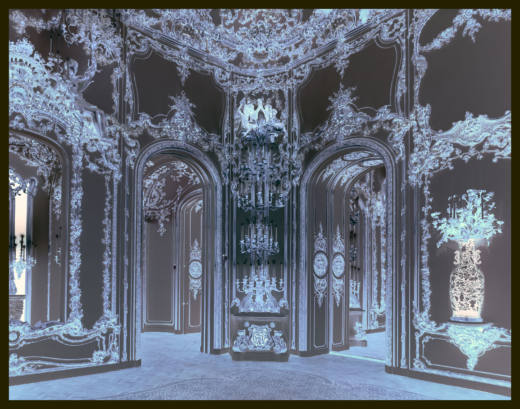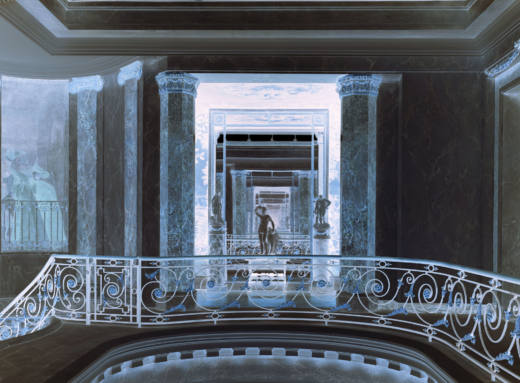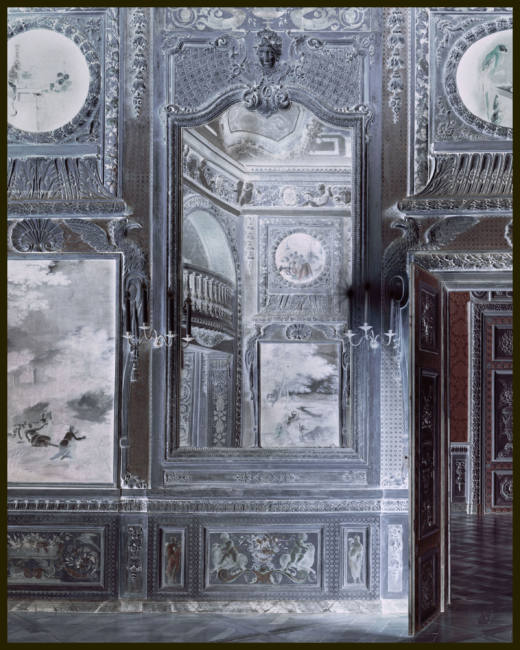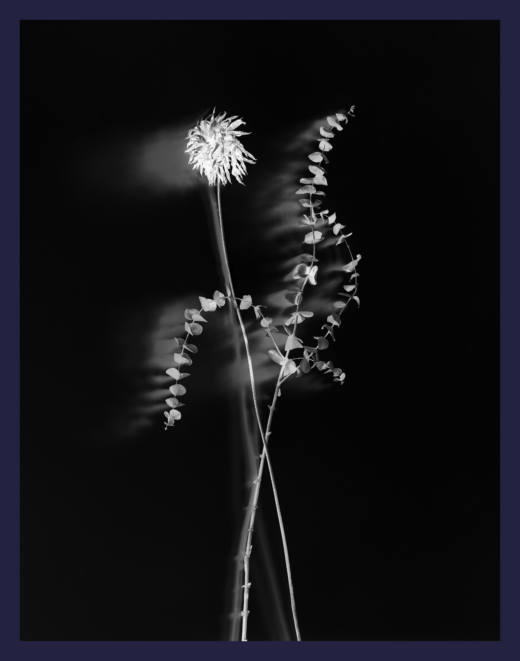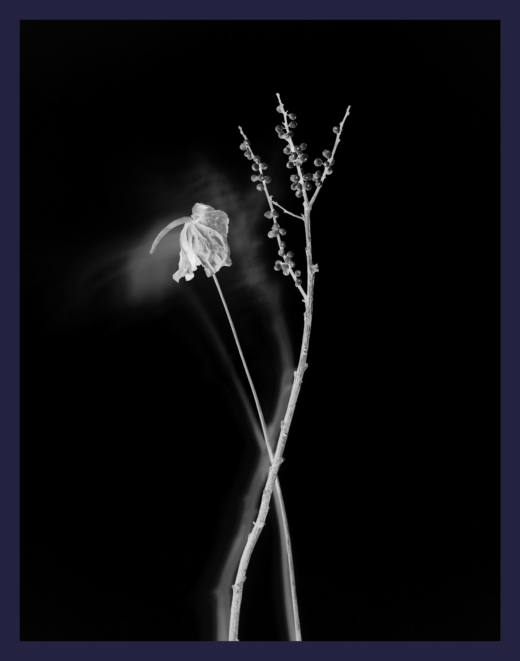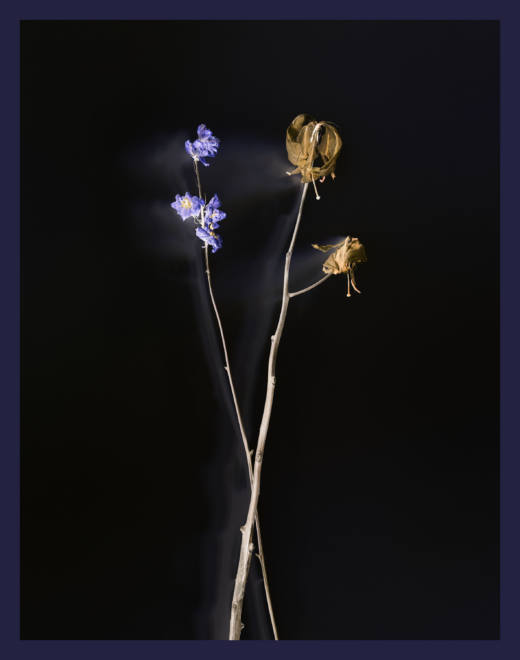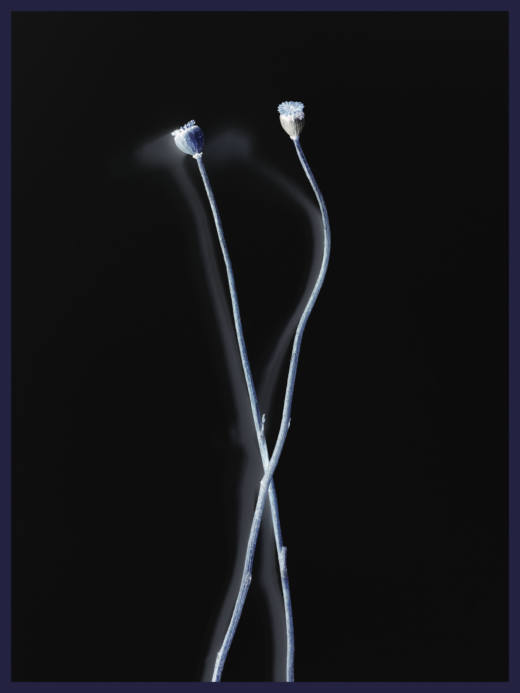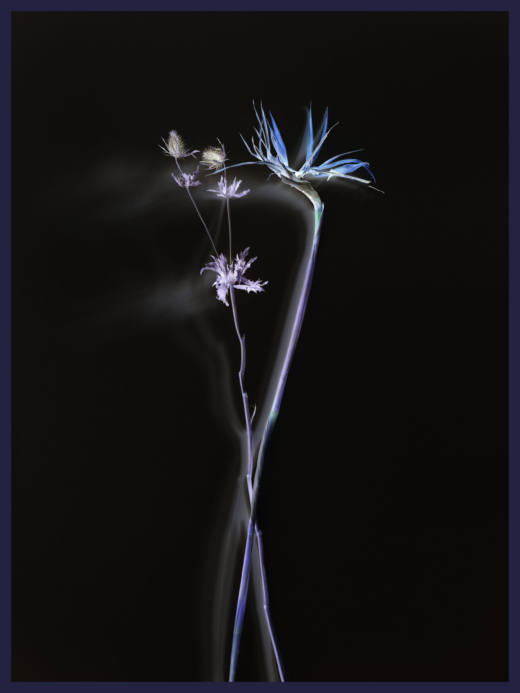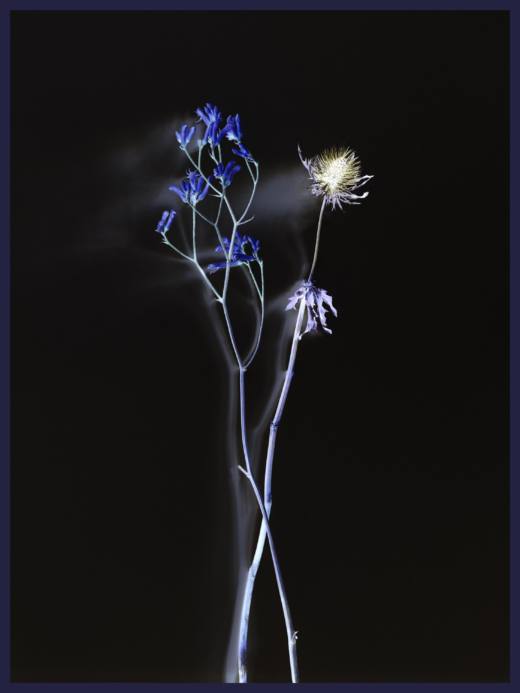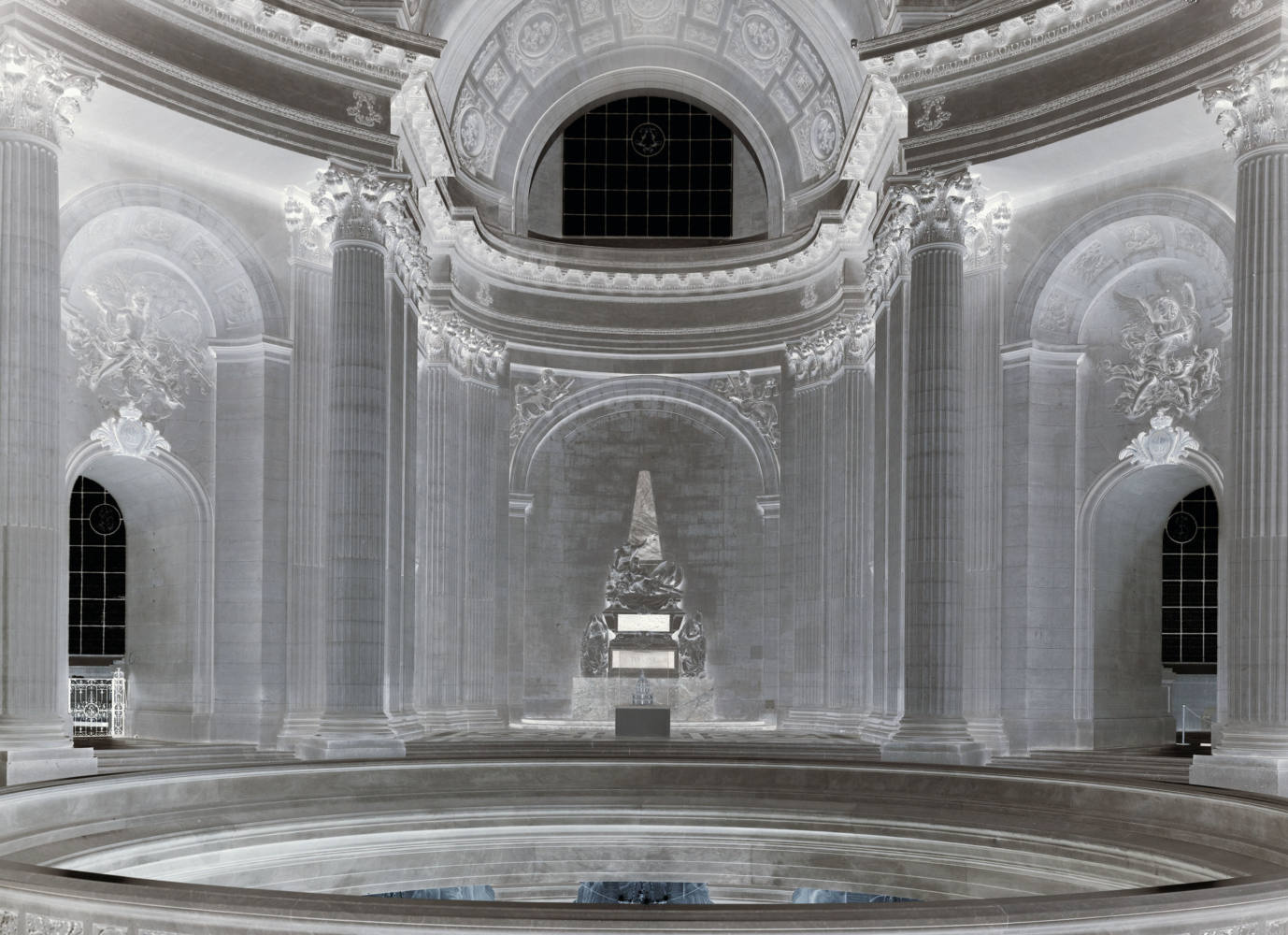
Flowers and Rooms Axel Hütte
04.05.23-15.07.23
One of Hütte’s most recent series of pictures shows flowers: wilted cut flowers that seem to willfully grow from the lower edge into the picture as a still life. All the photographs in this series were taken in specific lighting conditions in Hütte’s studio and then brought into their finished form by means of a relatively simple pictorial manipulation, namely by reversing all the colors. Against a matte black background—printed either on aluminum or on large-format sheets of paper—the plants tower into the viewer’s field of vision in a strange way, glowing from within, while the original shadows seem to follow them like ghostly veils of light.
As surreal as the Flowers may appear and as much as the plants in these pictures seem to be ghosts of themselves, locating these series of photographs solely within an alluring, dark-to-metallic counter-world is far too simplistic. The production method of the color reversal is first a purely technical operation; a controlled experiment of seeing habits. The technique, however, is not aimed at a total illusion or at overwhelming the eyes with the fascination of a completely other world, but clearly recognizes the timeless, primal beauty of the motifs as an autonomous quality of the photographs.
The consciousness that each photograph can not only be changed, improved, or manipulated has become common knowledge. Where a suitable app on a mobile phone can optimize or distort one’s own selfies, artificiality is not a deviation, but another normal case. Within this framework, a photograph that understands itself as thoroughly contemporary art has a greater capacity to reflect on the artificiality of images. In their respective idiosyncratic ways, all of Axel Hütte’s pictures do justice to this circumstance.
Applied to a different subject, a similar approach obscures a group of images depicting baroque interiors. Without any perspective distortions, the images depict their subjects in a frontal and central view. These otherwise “classic” photographic representations of architecture then undergo a complete destabilization of the viewers’ expectations by the reversal of all color values.
Daniel Marzona

Axel Hütte. Flowers and Rooms © Joaquín Cortés

Axel Hütte. Flowers and Rooms © Joaquín Cortés

Axel Hütte. Flowers and Rooms © Joaquín Cortés

Axel Hütte. Flowers and Rooms © Joaquín Cortés
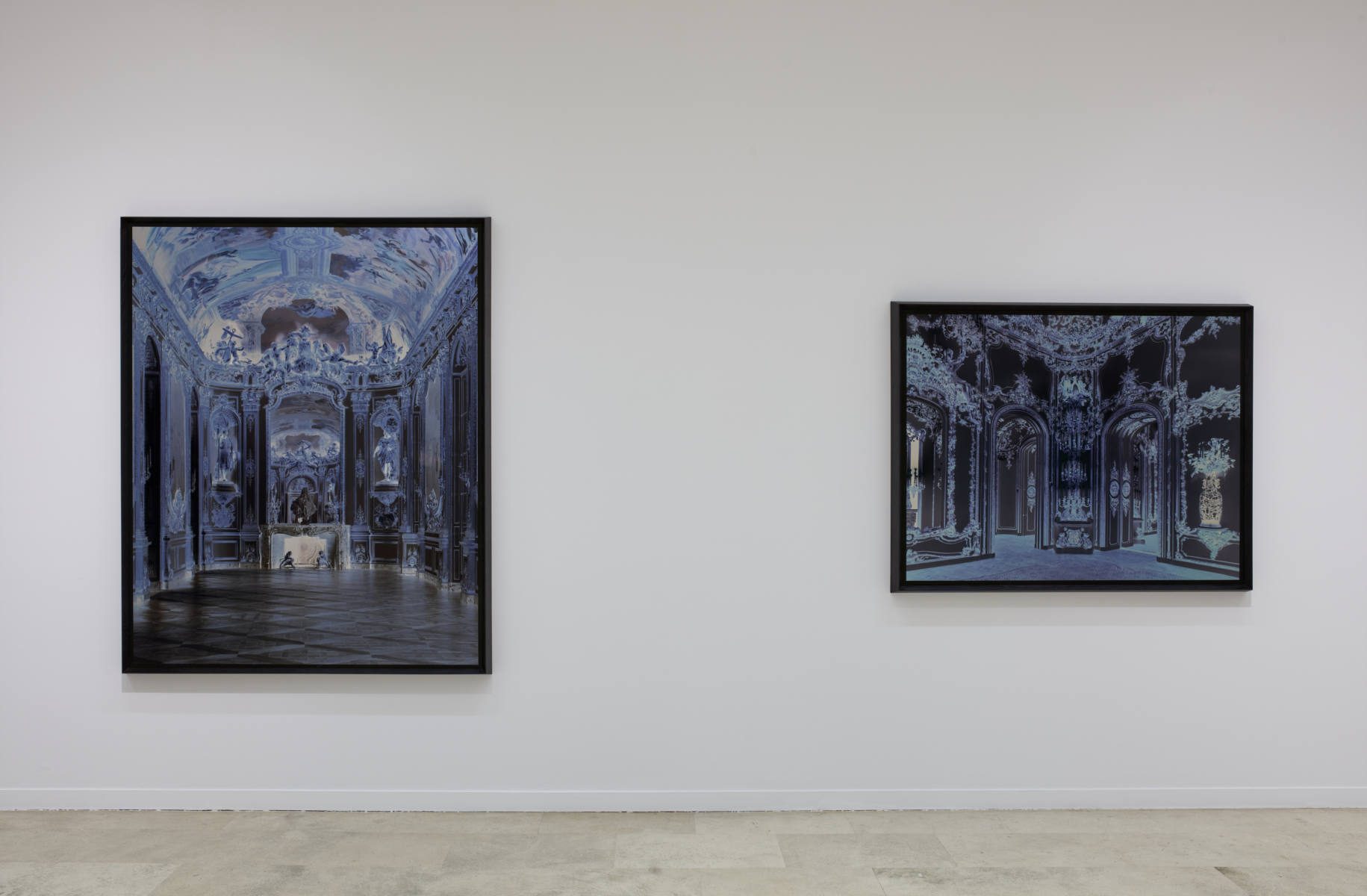
Axel Hütte. Flowers and Rooms © Joaquín Cortés

Axel Hütte. Flowers and Rooms © Joaquín Cortés

Axel Hütte. Flowers and Rooms © Joaquín Cortés

Axel Hütte. Flowers and Rooms © Joaquín Cortés

Axel Hütte. Flowers and Rooms © Joaquín Cortés

Axel Hütte. Flowers and Rooms © Joaquín Cortés


